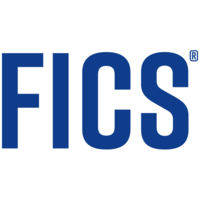
The world can change in an instant. At the beginning of the year, mortgage foreclosures and delinquencies were at an all-time low. The national mortgage delinquency rate was 3.77% of all loans outstanding at the end of 2019, the lowest level since the Mortgage Bankers Association’s quarterly survey began in 1979.
Just a few months later, many borrowers couldn’t pay their mortgage due to financial hardships caused by the COVID-19 pandemic. At the end of Q2 2020, the delinquency rate for mortgage loans on one-to-four-unit residential properties was 8.22% of all loans outstanding, according to the MBA’s National Delinquency Survey. Servicers reported loans in forbearance as delinquent if the payment was not made based on the original terms of the mortgage.
In response to the pandemic-triggered financial crisis, the government stepped in to keep borrowers from losing their homes. Borrowers affected by COVID-19 with federally backed mortgages can request up to 12 months of forbearance. Signed into law on March 27, 2020, the Coronavirus Aid, Relief and Economic Security Act (CARES Act) includes several provisions related to federally backed mortgages, which make up about two-thirds of residential mortgages.

Under the CARES Act, mortgage servicers must offer up to 12 months of forbearance, in up to 180-day increments, to COVID-19-affected homeowners who have federally backed mortgage loans for one to four-unit family properties.
According to the MBA’s Forbearance and Call Volume Survey, the total loans in forbearance grew from 0.25% on March 2 to 8.55% on June 7. Although the number of loans in forbearance has been declining since then, 6.87% of loans (approximately 3.4 million homeowners) remain in forbearance plans as of September 20.
To accommodate the large volume of forbearance loans, mortgage servicers must have functional, flexible and effective forbearance processes in place. Creating a clear and concise roadmap of what the forbearance process entails should improve the borrower’s understanding of forbearance and speed up the overall process. The roadmap should ultimately take the homeowner from forbearance to post-forbearance and allow both lenders and borrowers to emerge with a forbearance plan that can preserve revenue while avoiding costly foreclosures.
Build plans that are flexible
With new guidelines and regulations introduced every week, many borrowers are unaware of or confused by the forbearance options. A roadmap can help borrowers and mortgage servicers smoothly navigate the journey from forbearance to post-forbearance. Servicers can ease the process for borrowers by following these steps.
Communicate with borrowers
When implementing a forbearance plan, mortgage servicers must clearly explain to borrowers what forbearance means, what repayment options they have when forbearance ends, and the implications (e.g., a potential delay in their ability to refinance their loan).
Servicers may want to refer to Fannie Mae’s and Freddie Mac’s “COVID-19 Forbearance Script for Servicer Use with Homeowners” for guidance on how to discuss what forbearance means, how it works and repayment options. If borrowers have a hardship that has impacted their ability to pay their mortgage but the hardship is not directly or indirectly related to the COVID-19 national emergency, servicers should proceed with normal loss mitigation scripting.
Be responsive
Borrowers requesting forbearance must be able to contact a customer service representative in a timely manner. In a letter from members of the House Financial Services Committee, Congress explicitly called on servicers to be sure they have the capacity to handle customer call volume so borrowers can receive assistance “without excessive wait times or other delays.”
According to the MBA’s Forbearance and Call Volume Survey, call center volume was almost as high in mid-September (8.3% of servicer volume) as it was in May (8.6%), with September call wait times (three minutes) slightly longer than they were in May (2.6 minutes). Customer service staff must be able to handle the increased demand. Servicers should work diligently to answer borrowers’ questions and meet their needs during this very stressful time.
Servicers should take advantage of borrower-facing web applications to provide mortgage statements and information to borrowers who aren’t in forbearance, to reduce routine phone calls and give servicers more time to talk with the forbearance borrowers.
Create a post-forbearance roadmap
Some borrowers incorrectly assume that their only option post-forbearance is to repay the skipped payments in one lump sum – something that is impossible for many borrowers still facing uncertain employment options. Borrowers actually have several repayment options. Thirty days before the end of the forbearance period, mortgage servicers must contact borrowers to discuss repayment options and determine which one(s) work best for their particular circumstances. Borrowers may have several options:
- Repay the loan in one lump sum, if they can. Borrowers may be able to repay the missed payments all at once by taking funds out of their 401k, IRA or other retirement plan.
- Extend the forbearance period.
- Take advantage of a loss mitigation plan. This may include a repayment plan to keep borrowers in their homes, or loan modifications such as writing off part of the loan or extending the terms of the original loan.
If a loss mitigation plan is the best fit, borrowers will complete a worksheet to allow the servicer to assess income, the size of the loan and whether a repayment plan or a loan modification will be the better option. If a repayment plan is the way to go, the borrower may be able to start repaying at the end of the forbearance timeline. Loan modifications may include adjusting the principal and interest payments, extending the loan term to 30 years or beyond, and/or decreasing the interest rate. Servicers should explore these options with borrowers to determine what best meets their needs.
Track plan details
With so many loans in forbearance, servicers need an efficient way to track the specific terms/details of each borrower’s forbearance and post-forbearance plans. Mortgage servicing software must be able to accommodate payment deferment and other loan modifications.
Use leading-edge mortgage software that has extensive loss mitigation capabilities, including a forbearance/deferment window that allows servicers to track:
- Forbearance plan details on the loan level
- Terms: number of months, starting and ending dates
- Borrower details (e.g., type of hardship, status of the forbearance plan)
- Post-forbearance plans
- Repayment plans (e.g., reduced payments)
- Loan modifications (e.g., new term length, interest rate)
- Deferment of interest
While the forbearance and post-forbearance processes can be extremely stressful for borrowers, servicers can reduce that stress by communicating effectively with borrowers and helping them develop the right plans. By using mortgage servicing software to track those forbearance and post-forbearance plan details, servicers can more efficiently handle the increased number of modifications. Versatile software allows borrowers and servicers to walk through the forbearance period with relative ease, remain up to date on the timeline and have a more complete picture of the necessary steps to return borrowers’ mortgages to a current status.
Anita Bush is vice president of Mortgage Servicer product development of FICS, a mortgage software company specializing in mortgage origination, residential mortgage servicing and commercial mortgage servicing software for mortgage lenders, banks and credit unions.












